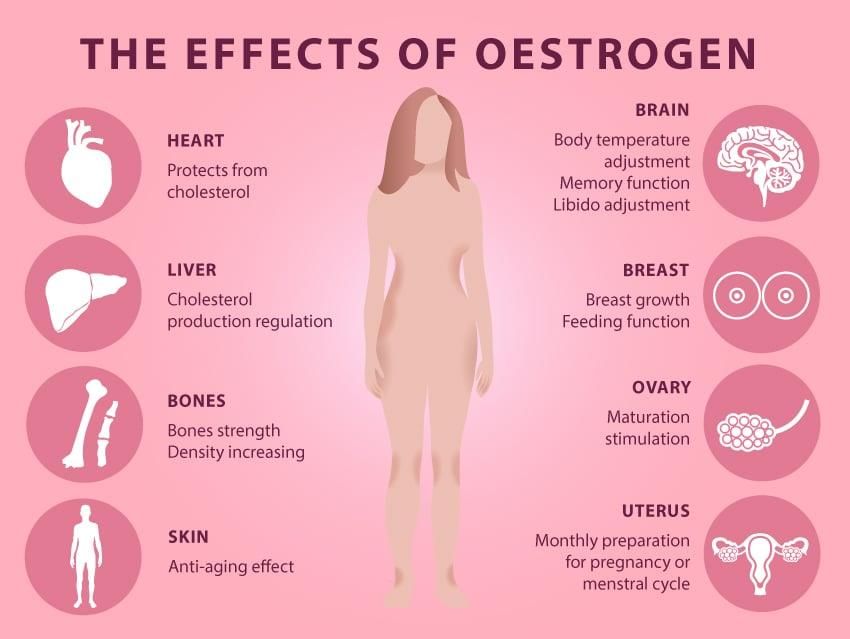UPSC Daily Current Affairs: 9 August 2024 | Current Affairs & Hindu Analysis: Daily, Weekly & Monthly PDF Download
GS3/Economy
India Waives Clinical Trials for Several Drugs Approved in Major Western Markets
Source: Business Standard

Why in news?
The government has waived the requirement for clinical trials of certain categories of drugs in India if they are approved in the US, the UK, Japan, Australia, Canada, and the European Union.
Clinical Trials in India
About
- Clinical trials in India are essential for assessing the safety and effectiveness of new drugs, medical devices, and treatment methods.
- These trials occur in phases and play a crucial role in advancing medical science and patient care.
- India, with its diverse population and range of medical conditions, is an attractive hub for clinical trials, offering data that can be applied across various populations.
Regulatory Framework
- The Central Drugs Standard Control Organization (CDSCO) under the Ministry of Health and Family Welfare primarily regulates clinical trials in India.
- The Drugs and Cosmetics Act, 1940, and subsequent amendments, along with the New Drugs and Clinical Trials Rules, 2019, establish the legal framework for conducting trials in the country.
Institutions Involved
- The apex regulatory body overseeing drug approval and clinical trials.
- Indian Council of Medical Research (ICMR) sets ethical guidelines and standards for trials.
- Drug Controller General of India (DCGI) grants approvals for trials and ensures compliance with regulations.
- Clinical Trial Registry of India (CTRI) was launched in 2007 by ICMR to register all trials in India before participant enrollment.
Ethical Oversight and Committees
- Ethics Committees (ECs) are essential for reviewing trial protocols and ensuring participant safety.
- Institutional Review Boards (IRBs) monitor ethical aspects of trials within institutions.
- Independent Ethics Committees ensure adherence to ethical standards for trials outside institutional settings.
- ICMR National Ethical Guidelines for Biomedical and Health Research emphasize informed consent, confidentiality, and protection of vulnerable populations.
About the news
- India has waived the need for local clinical trials for specific drug categories already approved in major global markets.
- The waiver covers orphan drugs for rare diseases, gene and cellular therapy products, new drugs for pandemics and defense purposes, and drugs with significant therapeutic advancements.
- This decision aims to hasten the availability of advanced medications in India, especially for conditions like cancer, rare diseases, and autoimmune disorders.
Rule under which this was done
- Under Rule 101 of the New Drugs and Clinical Trials Rules, 2019, the Drugs Controller General of India (DCGI) can grant this waiver.
Benefits
- The waiver aligns India with global markets, reducing delays in drug availability and costs for pharmaceutical companies and the government.
- It is expected to boost research and innovation in India by providing early access to advanced medicines and patient data.
Concerns
- Previously, India allowed waivers for local clinical trials, but concerns were raised in a parliamentary report about approving new drugs without such trials.
- Public health advocates stress the need for strict scrutiny before every waiver to ensure suitability for Indian conditions and genetic factors.
GS3/Environment
Why Himalayan Towns Need a Different Kind of Development
Source: The Hindu

Why in news?
Indian Himalayan Region spans across 13 Indian States/Union Territories, covering 2500 km and housing around 50 million people with diverse demographic and economic systems.
- Towns expanding with unique urbanisation needs in the Himalayas.
Challenges in Himalayan Towns
- Himalayan towns, including state capitals, facing civic management challenges like sanitation, waste management, and water supply.
- Challenges due to planning models unsuitable for Himalayan conditions and severe understaffing in city governments.
- Concerns of urban expansion impacting open spaces, forest lands, and water bodies, leading to environmental degradation.
Underlying Causes
- Pressures from urbanisation, high-intensity tourism, unsustainable practices, and climate change impacts leading to water scarcity, deforestation, biodiversity loss, and pollution.
- Expansion of tourism affecting eco-friendly infrastructure and ecosystem services negatively, necessitating a shift towards ecotourism.
Strategic Recommendations
- Mapping and Vulnerability Assessment: Shifting to comprehensive approaches considering geological and hydrological vulnerabilities, with community involvement.
- Climate-Resilient Urban Design: Focusing on climate-resilient designs over consultant-driven planning.
- Urban Financing for IHR: Urging for increased urban financing support recognizing high costs and lack of industrial corridors.
- Focus on Sustainability: Engaging in discussions about sustainability through eco-centric planning involving public participation.
GS3/Environment
Chhattisgarh to Get New Tiger Reserve
Source: Indian Express

Why in news?
Chhattisgarh has recently approved the establishment of a new tiger reserve, which is set to become the third largest in India. This decision comes amidst a concerning decline in the state's tiger population.
About Guru Ghasidas-Tamor Pingla Tiger Reserve
- The Guru Ghasidas-Tamor Pingla Tiger Reserve is Chhattisgarh's fourth reserve dedicated to tigers.
- It merges an existing national park with a wildlife sanctuary.
- This reserve spans 2,829 square kilometers across four northern districts of Chhattisgarh.
Establishment of the Reserve
- The decision to establish this reserve was prompted by a PIL filed in 2019, emphasizing the decline in the state's tiger population.
- Despite approvals dating back to 2012, the government had not taken action until the recent cabinet decision in August.
- The merger of Guru Ghasidas National Park and Tamor Pingla Sanctuary led to the creation of this new reserve.
Tiger Reserves in India
- The Guru Ghasidas-Tamor Pingla Tiger Reserve will rank as the third largest in India, following Nagarjunasagar Srisailam and Manas Tiger Reserves.
- Nagarjunasagar Srisailam Tiger Reserve in Andhra Pradesh is the largest, covering 3,296.31 sq km.
- Manas Tiger Reserve in Assam holds the second spot, with an area of 2,837.1 sq km.
GS3/Science and Technology
Neutron Stars
Source: Business Standard

Why in news?
Astronomers have recently made a significant discovery of ten peculiar dead stars, known as "neutron stars," situated close to the center of the Milky Way galaxy.
About Neutron Stars :
- Neutron stars are the remnants of massive stars that have undergone a supernova explosion.
- They rank among the densest entities in the cosmos, surpassed only by black holes.
- Typically, neutron stars have a diameter of approximately 20 kilometers (12 miles) and a mass ranging from 1.18 to 1.97 times that of the Sun.
How Are Neutron Stars Formed?
- Supernova Explosion: When a massive star (usually 10-25 times the mass of the Sun) depletes its nuclear fuel, it can no longer resist gravitational collapse, leading to a supernova outburst.
- Core Collapse: The star's core implodes due to gravity, causing protons and electrons to merge into neutrons, resulting in an incredibly dense core primarily composed of neutrons.
- Formation of Neutron Star: If the core's mass falls within the range of about 1 to 3 solar masses, the newly formed neutrons can prevent further collapse, giving rise to a neutron star. If the core's mass exceeds this threshold, it will continue collapsing into a black hole.
Characteristics of Neutron Stars
- Density: Neutron stars exhibit extreme density, where a sugar-cube-sized amount of neutron star material would weigh approximately a billion tons on Earth.
- Magnetic Fields: These stars possess immensely strong magnetic fields, which can be billions of times more powerful than Earth's magnetic field.
- Rotation: Neutron stars can rotate at very high speeds, at times reaching hundreds of rotations per second. Such swiftly spinning neutron stars are termed pulsars.
- Temperature: Newly formed neutron stars may feature surface temperatures of around 10 million Kelvin. As they age, they cool down, but even older neutron stars can retain considerable heat.
GS2/Polity
The hormone Oestrogen
Source: The Hindu

Why in news?
A recent study in Nature by researchers at the Universities of California uncovered a brain-derived hormone, CCN3, which increases bone mass in postpartum lactating mothers.
What is Oestrogen?
- Oestrogen is a crucial hormone for female reproduction and sexual growth.
- It manages the menstrual cycle and is vital for developing features such as breasts.
- Oestrogen is important for heart health and maintaining strong bones.
- It is mostly made in the ovaries but also in small amounts by the adrenal glands and fat.
- This hormone affects various parts of the body like the brain, heart, skin, and bones.
- Having imbalanced oestrogen levels can cause health problems like osteoporosis and heart disease.
Role of Oestrogen in Bone Growth
- Oestrogen is essential for bone growth and formation, acting as a supervisor signaling bone building.
- When breastfeeding, oestrogen production decreases to focus on making milk, which might make bones weaker.
- Despite expectations, mothers' bones get stronger to meet their babies' need for calcium.
How does the 'Hidden' Hormone Help Keep Mouse Moms' Bones Healthy?
- While breastfeeding, the body reduces oestrogen production to concentrate on milk making, which could weaken bones.
- Even with low oestrogen, mothers' bones toughen up.
- Scientists discovered that KISS1 neurons in the hypothalamus (part of the brain) release the CCN3 hormone, aiding in maintaining and potentially increasing bone mineralization.
- Experimental Results:
- In trials with genetically changed mice, those without the oestrogen receptor alpha still had healthy bones due to CCN3.
- When CCN3 was applied to skeletal stem cells, it notably boosted bone formation, displaying its ability to strengthen bones independently of oestrogen.
GS3/Science and Technology
Rashtriya Vigyan Puraskar (RVP)
Source: Indian Express

Why in news?
The central government recently unveiled the inaugural list of recipients of the Rashtriya Vigyan Puraskar (RVP) 2024.
The award ceremony is set to occur on August 23 at the Rashtrapati Bhavan Cultural Centre, coinciding with the inaugural National Space Day.
About Rashtriya Vigyan Puraskar
- The Rashtriya Vigyan Puraskar is a notable collection of accolades initiated by the Indian government to acknowledge exceptional contributions in the realms of science, technology, and innovation.
- These distinctions are held in the same regard as other national honors such as the Padma awards.
Categories of Awards
- Vigyan Ratna Awards: Acknowledges lifelong achievements and contributions in any area of science and technology.
- Vigyan Shri Awards: Commends distinguished contributions in any sphere of science and technology.
- Vigyan Team Awards: Bestowed upon teams comprising three or more scientists, researchers, or innovators for exceptional collaborative efforts.
- Vigyan Yuva-Shanti Swarup Bhatnagar (VY-SSB) Awards: The premier multidisciplinary science awards for young scientists (below 45 years of age), named in honor of Shanti Swarup Bhatnagar.
Eligibility
- Open to scientists, technologists, and innovators from governmental bodies, private sector organizations, or individuals operating independently.
- The awards also recognize contributions from People of Indian Origin residing abroad.
Domains
- Covers 13 domains including Physics, Chemistry, Biological Sciences, Mathematics & Computer Science, Earth Science, Medicine, Engineering Sciences, Agricultural Science, Environmental Science, Technology & Innovation, Atomic Energy, Space Science and Technology.
Nomination and Announcement
- Nominations are solicited annually from January 14th to February 28th, with award declarations made on May 11th (National Technology Day) and the ceremony held on August 23rd (National Space Day).
- All nominations submitted for the RVP awards are presented to the Rashtriya Vigyan Puraskar Committee (RVPC), led by the Principal Scientific Adviser (PSA) to the Government of India.
GS1/Geography
Pyrocumulonimbus Clouds
Source: Indian Express
Why in news?
Intense wildfires in the United States and Canada have led to the formation of pyrocumulonimbus clouds. The occurrence of these clouds has been on the rise, especially during extreme wildfire seasons.
Background
- Typically, around 102 pyrocumulonimbus clouds were observed globally each year, with about 50 in Canada.
- However, during the previous year's severe wildfire season, Canada alone witnessed 140 pyrocumulonimbus clouds.
About Pyrocumulonimbus Clouds
- Pyrocumulonimbus clouds, also known as cumulonimbus flammagenitus clouds (CbFg), form above heat sources like wildfires, nuclear explosions, or volcanic eruptions.
Formation of Pyrocumulonimbus Clouds
- Not all wildfires lead to the formation of these clouds; they occur during extremely hot fires or volcanic eruptions.
- For instance, the Australian bushfires of 2019-2020, with temperatures exceeding 800°C, resulted in their formation.
- Intense heat from fires causes surrounding air to rise, carrying water vapor, smoke, and ash.
- As the air ascends and cools, water vapor condenses on ash particles, forming pyrocumulus or "fire clouds."
- If enough water vapor is present and the upward movement of hot air intensifies, pyrocumulus clouds can evolve into pyrocumulonimbus clouds, reaching heights of up to 50,000 feet.
Impacts of Pyrocumulonimbus Clouds
- While they can create lightning, these clouds produce minimal rain, potentially starting new fires far from the original source.
- They can also induce strong winds, speeding up and complicating the spread of wildfires.
Increasing Frequency
- The exact reasons for the rise in pyrocumulonimbus events are not completely understood, although it is believed that climate change, leading to higher global temperatures and more intense wildfires, plays a role.
GS4/Ethics
Artificial Intelligence (AI) and Ethics
Source: Business Standard

Why in news?
Artificial Intelligence is rapidly advancing, garnering widespread attention with frequent innovations and product launches. The future of AI cannot rely solely on regulations. To ensure the development of safe and reliable AI systems, a balance between regulation and the promotion of high-quality data as a public asset is crucial.
Key Concepts:
- Artificial Intelligence (AI): Refers to the capacity of a computer or a robot under computer control to execute tasks that traditionally necessitate human intelligence and judgment.
- Ethical AI: Involves the creation and deployment of AI systems in a manner consistent with ethical principles, societal values, and human rights. It is also known as Moral or Responsible AI.
- Artificial Intelligence (AI) and Ethical Issues:
- Concerns arise about the preservation of authenticity and integrity in artistic expression with AI-generated content. It can be challenging to differentiate between human-created and AI-generated works.
- Questions revolve around the rights of artists, creators, and contributors in AI-based projects. Issues such as intellectual property, ownership, and consent for utilizing personal data or creative inputs come into play.
- AI's ability to revive historical voices or artistic styles raises ethical dilemmas regarding cultural preservation versus commercial exploitation of identities and legacies.
- The widespread integration of AI in creative sectors may impact human creativity and innovation, potentially leading to standardization, reduced diversity, or reliance on predetermined approaches.
- The absence of regulatory frameworks poses challenges in protecting privacy and preventing discrimination, necessitating adaptation and enforcement in response to evolving technologies.
- Way Forward:
- Transparency and disclosure in AI-driven creative processes are essential, including clear attribution of AI-generated content and obtaining informed consent from all involved parties.
- The authenticity and integrity of artistic expression must be maintained by recognizing the contributions of human creators and respecting their rights to control and receive due credit for their work.
- Developing ethical guidelines and best practices for the ethical utilization of AI in creative endeavors is imperative, addressing aspects like consent, ownership, fairness, and accountability.
- Regulatory oversight and governance mechanisms should advocate for compliance with ethical standards and safeguard the rights and interests of individuals participating in AI-driven creative projects.
GS3/Economy
Kasturi Cotton
Source: Economic Times

Why in news?
Union Minister of State for Textiles, Shri Pabitra Margherita, highlighted the progress in the Kasturi cotton initiative in a recent communication to the Lok Sabha.
About Kasturi Cotton
Kasturi Cotton stands as a distinguished premium cotton brand originating from India, strategically launched by the Indian government to bolster the global recognition of the country's cotton and textile sector.
Key Features
- High Quality: Kasturi Cotton is renowned for its extended staple length, typically 30 mm and 29 mm, ensuring exceptional quality. It must meet stringent parameters such as micronaire value, RD (degrees of reflectance) value, fiber strength, uniformity index, trash, and moisture content.
- Traceability: A notable aspect of Kasturi Cotton is its utilization of blockchain traceability and barcode validation, ensuring transparency and quality control throughout the supply chain.
- Sustainability: The brand prioritizes sustainable practices in cotton production, thereby commanding premium prices and enhancing credibility.
Objectives
- Kasturi Cotton aims to carve a distinctive identity for Indian cotton in the global market, fortifying India's position as a leading cotton producer.
- Value Addition: It endeavors to enhance the value of the entire cotton ecosystem, from farmers to end-users, by upholding high standards and ensuring traceability.
Additional Information
The Cotton Textiles Export Promotion Council (TEXPROCIL), the apex body responsible for promoting exports of Indian cotton textile products, has been entrusted as the executing agency for Traceability, Certification, and Branding of "KASTURI Cotton India."
|
63 videos|5408 docs|1146 tests
|
















